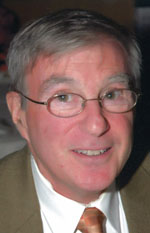Where the Jews Aren’t: The Sad and Absurd Story of Birobidzhan, Russia’s Jewish Autonomous Region by Masha Gessen, Nextbooks, Schocken, New York ©2016, ISBN 978-0-8052-4246-1, p. 147, plus notes, published sources, and index, $25.00
By Fred Reiss, Ed.D.

WINCHESTER, California – In 1908, about a decade after the first Zionist Congress, the British government offered territory to Jews fleeing Russian settlements in what is modern-day Kenya. The Zionist Movement, rejecting the offer, deeply divided between those demanding Palestine as the only acceptable option and those willing to take any land for a new Jewish state. The Slattery Report, in 1938, suggested settling Jews fleeing Nazi Germany in the territory of Alaska, but President Roosevelt refused to back the plan.
In between these two events, in 1934, the Russian government established a Jewish Autonomous Region, an agricultural experiment, centered in the city of Birobidzhan, near the Chinese border, as an answer to its “Jewish question”: How after the Bolshevik Revolution, World War I, and anti-Semitic pogroms, do we handle the more than two million Russian Jews residing within the Pale of Settlement living in poverty and distance them from nearby ethnic groups who hate them?
Moscow-born Masha Gessen, author of Where the Jews Aren’t, gives a clear and concise history of the region, including the shifting allegiances of the Jewish literary elites, such as David Bergelson and Simon Dubnow, who envisioned a Yiddish-centered community and the multiple and often diametrically opposed goals of various Russian governments as they sought to create a Jewish homeland within its borders.
Jews wanting to move to Birobidzhan began by contacting the government agency formed in the late 1920s, KOMZET, the Committee for the Settlement of Jewish Toilers on the Land, or its sister organization OZET, the Committee for the Settlement of Toiling Jews on the Land. Birobidzhan and the Jewish Autonomous Region, supported by ICOR, the Association for Jewish Colonization in the Soviet Union, was known throughout the world. Foreign-born Russians, Jewish artists and literati flocked to area, establishing, with permission of the Russian government, Yiddish (non-religious) schools, newspapers, and theatres. The government even printed signs in Yiddish and Russian, hoping to draw Jews to a singular Jewish cultural center devoid of religious Judaism.
Like similar Jewish agricultural experiments in the nineteenth and early twentieth centuries formed by Jewish philanthropists and philanthropic agencies, it too failed, often hard hit by the brutal Russian winters and the government’s failure to provide such necessities as proper shelter, food, and medicine. Jews remained, not in agriculture, but in jobs in which they were previously trained and employed.
The purges by Stalin and his secret police between 1936 and 1938 affected Birobidzhan and the surrounding Jewish Autonomous Region. Gessen writes, “The Great Terror was beginning, and its first wave of purges would profoundly affect Birobidzhan.” Though not well known today, such contemporary notables such as Joseph Liberberg, head of the Jewish section of the Ukrainian Academy of Sciences, was executed and Matvei Khavkin, head of the Communist Party in the Jewish Autonomous Region, was arrested for Trotskyism, bourgeois nationalism, and counterrevolutionary activities, serving fifteen years at hard labor. His wife and children became wards of the state. Eventually, thousands were rounded up and sent to a slave-labor camps or summarily executed.
With the start of World War II, ethnic nationals received greater freedoms; the Communist Party permitted the Jewish Bund to form a Jewish Anti-Fascist Committee, allowing some of its members to travel to America, hoping to influence Western public opinion in favor of the Soviet Union’s fight against the Nazis. Nazi war crimes against the Jews in Russian territory held by the Germans were documented, published later under the title The Black Book, in many countries, but not Russia.
Within three years of the war’s end, Stalin and the Russian government no longer tolerated ethnic identity, rejecting unique cultures in favor of nationalism. All Jewish programs, Yiddish and cultural, were terminated and Jewish leaders with any history of Zionism were arrested, tried, and ultimately many put to death.
Birobidzhan still exists, a shadow of its former glory as a Jewish haven. Gessen concludes with her 2009 travel to Birobidzhan, an eight-hour flight from Moscow followed by a two-hour train ride, and reports on the state of the city and its lone museum, where she finds three rooms on the second floor devoted to the Jews in the region.
Where the Jews Aren’t is a fascinating tale of modern Russian history, describing the intertwining lives of important Russian Jewish nationals involved in the creation and maintenance of a Jewish-centric territory and showing that Jews, like other indigenous nationalities, were elated to celebrate their culture, only to be caught in the cross hairs of a despotic government.
*
Dr. Fred Reiss is a retired public and Hebrew school teacher and administrator. He is the author of The Standard Guide to the Jewish and Civil Calendars; Public Education in Camden, NJ: From Inception to Integration; Ancient Secrets of Creation: Sepher Yetzira, the Book that Started Kabbalah, Revealed; and a fiction book, Reclaiming the Messiah. The author may be contacted via fred.reiss@sdjewishworld.com.